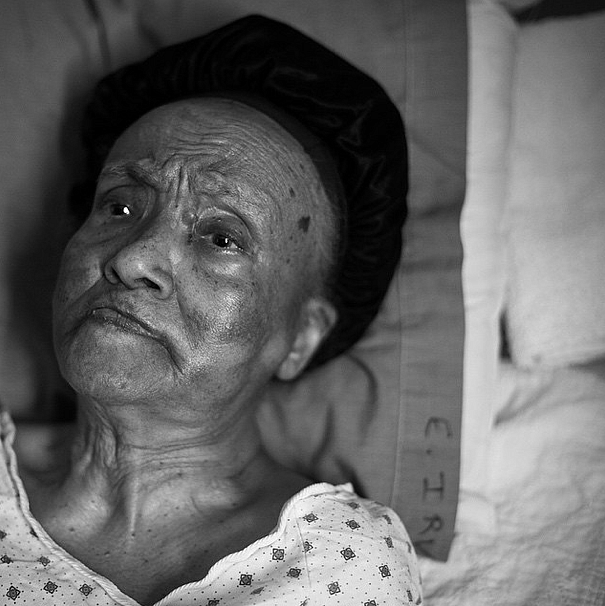Strategies to ensure your big story lands with maximum impact (Part 1)

(Photo credit: JON LOWENSTEIN/NOOR)
(This post is the first of two parts.)
I recently published a three-part series through the Center for Public Integrity that focused on aspects of nursing home care that had received little to no journalistic attention. The major stories exposed national discrepancies in the self-reported data that nursing homes provide through Nursing Home Compare and the average daily level we calculated through the cost reports, as well as racial disparities in the amount of registered nurse care. We also revealed the nearly $2 billion in low-cost, HUD-backed mortgages that had been granted since 2009 to nursing homes that had received the lowest possible overall quality ratings.
The project took close to a year to carry out and has generated a strong response among other media, advocates, lawyers, academics, family members, government agencies and federal and state elected officials. Over two posts, I’m going to share 10 strategies I used to find and engage as many audiences as I could.
1. Think broadly in identifying potential audiences.
I ended up discovering close to a dozen different audiences that had a strong stake in nursing home issues within the first few months of reporting. Talking with people in these groups helped me gain a broader understanding of the industry landscape. Some of these groups popped up in unanticipated places. While searching on Twitter for people and organizations who might be useful to contact, for example, I happened across an international conference that had been recently held at a nearby law school. This gathering was the precursor to a group of law professors who petitioned the United Nations in August for a convention supporting the universal human rights of seniors. One of the leaders in this effort has since expressed his interest in filing an administrative complaint against the U.S. Department of Housing and Urban Development; others within the nursing home community have been interested in learning about this different legal approach to the issue.
2. Think in terms of public service, not just getting the interview.
In addition to seeking an interview, I emphasized our desire for our project to be of service to nearly all of the sources with whom I spoke. This shifted the orientation of the conversation from a binary "Yes/No" response on the interview to a more ongoing conversation in which the goal was to be in dialogue with contacts and let them know when the work was out so that they would be able to take action on it if they wanted. I continued to reach out to some of these sources even if they did not grant an interview. I found that this approach yielded deeper conversations with the sources who did talk and to whom I returned over time. It also caused people to start thinking about what they would do with the work after it was published.
Before my project was published, I had meetings arranged with a top federal legislator, leaders of a federal Office for Civil Rights, and an invitation to speak at the annual conference of the largest nursing homes advocacy group.
3. Think about the tools that each audience group needs.
Different people and organizations need different information in order to move forward based on the work you have published. Other media generally want to be able to localize the national trends you have identified, so providing them support in that area can lead to more coverage and engagement. The federal agencies and lawyers I spoke with seemed less interested in the national analyses than in identifying specific facilities or chains to which they could allocate their finite resources. Advocates tend to want to know what the situation is like in their state. Incorporating that awareness into your reporting and in the information you provide can enhance how audiences engage with that material.
4. Think nationally, report locally.
My nursing home care project had three data-rich stories of national scope. This spine helped to create an overarching framework and a wide range of opportunities for people across the country to apply this information to their local situation as well as a broader context.
I initially had identified the gap between the self-reported staffing levels on public website Nursing Home Compare and the average daily staffing level (calculated through an analysis of financial cost reports for Illinois in 2010) and confirmed it in late 2013, after I submitted a FOIA request for four additional years of data. But the project and its potential impact grew dramatically in scope after talking with the then-data editor of the Center for Public Integrity, who encouraged me to see if there was a single place where these data were held nationally. I poked around and found that the information I wanted had recently been submitted to the Centers for Medicare and Medicaid Services, as required by the Affordable Care Act. I carried out the analysis and found that Illinois was part of a larger national trend.
5. Think in terms of legal standards and previous reports.
Powerful data findings are exciting, but they mean more when they raise questions about violations of state or federal law. The findings are strengthened too, if government agencies have previously signaled they’re aware of the problem but haven’t done anything about it.
Both of these were true with the nursing homes project. We found a series of reports dating back years that pointed out the inaccuracy of self-reported staffing data and the problems with HUD's management of the mortgage insurance program. In addition, a provision of the Affordable Care Act required that nursing homes transition from self-reported to payroll-based data by March 2012. That still hasn't happened, and may not for another two years even though bipartisan legislation passed in October called for the allocation of the $11 million CMS said it needed to establish the system.
Next: Five more lessons for ensuring your reporting project lands with maximum impact.
